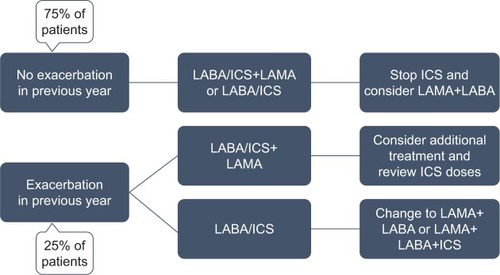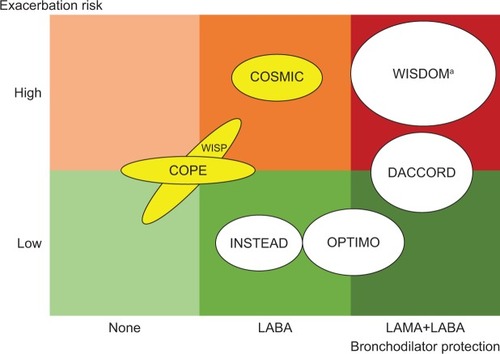Figures & data
Figure 1 Algorithm for withdrawal of ICS in symptomatic patients with COPD.a
Abbreviations: ICS, inhaled corticosteroid; LABA, long-acting β2-adrenoreceptor agonists; LAMA, long-acting muscarinic receptor antagonist.

Table 1 Overview of ICS withdrawal studies
Figure 2 Simplified model for bronchodilator protection, based on ICS withdrawal studies ().
Abbreviations: ICS, inhaled corticosteroid; LABA, long-acting β2-adrenoreceptor agonists; LAMA, long-acting muscarinic receptor antagonist.

Figure 3 De-escalation of ICS, according to WISDOM.Citation56

